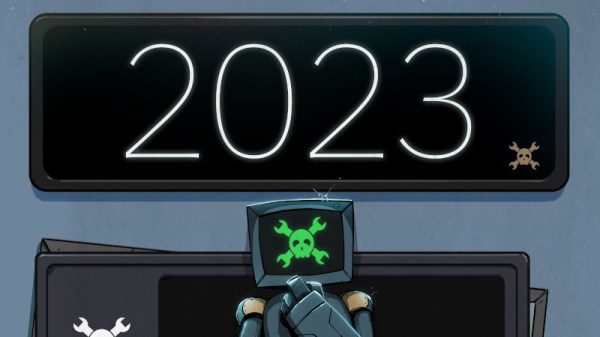Sometimes simpler is more impressive than complicated, and part of this is certainly due to Arthur C. Clarke’s third law: “Any sufficiently advanced technology is indistinguishable from magic.”. It’s counter-intuitive, though, that a high-tech project would seem any less amazing than a simpler one, but hear me out.
I first noticed this ages ago, when we were ripping out the blue laser diodes from Casio XJ-A130 laser projectors back when this was the only way to get a powerful blue laser diode. Casio had bought up the world’s supply of the 1.5 W Nichias, and was putting 24 of them in each projector, making them worth more dead than alive, if you know what I mean. Anyway, we were putting on a laser show, and the bright blue diode laser was just what we needed.

Color laser setups take three or more different lasers, combine the beams, and then bounce them off of mirrors attached to galvos. Steer the mirrors around, and you can project vector images. It’s pretty cool tech, and involves some serious fine-tuning, but the irony here is that we were tearing apart a device with 788,736 microscopic DLP mirrors to point the lasers through just two. And yet, a DIY laser show is significantly cooler than just putting up your powerpoint on the office wall.
The same thing goes for 2D plotting machines like the AxiDraw. The astonishing tech behind any old laser printer is mind-numbing. Possibly literally. Why else would we think that art drawn out by a pen in the hands of a stepper-powered robot is cooler than the output of a 1600 DPI unit coming from HP’s stable? I mean, instead of running an hours-long job to put ink on paper with a pen, my Laserjet puts out an image in ten seconds. But it’s just not as much fun.
So here we are, in an age where there’s so darn much magic all around us, in the form of sufficiently advanced technology, that comprehensible devices are actually more impressive. And my guess is that it’s partly because it’s not surprising when a device that’s already magic does something magical. I mean, that’s just what it’s supposed to do. Duh!
But when something beautiful emerges from a pair of mirrors epoxied to shafts on springs turned by copper coils, that’s real magic.


















